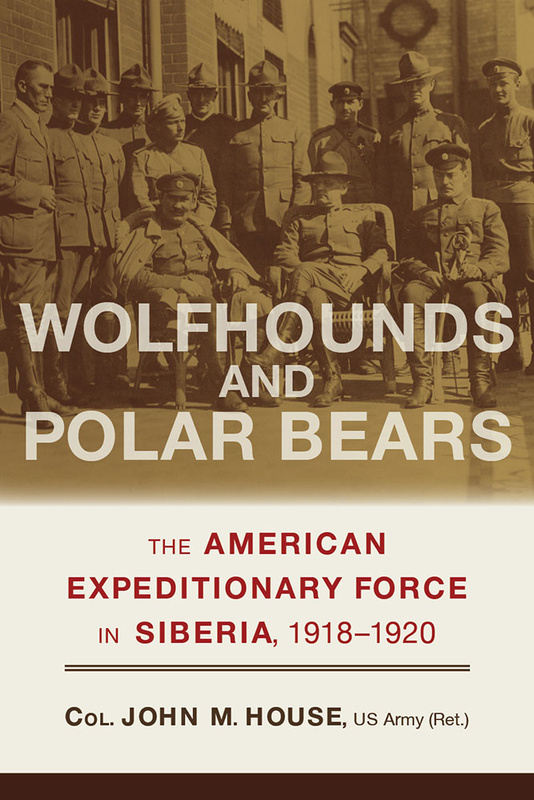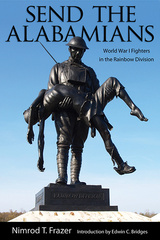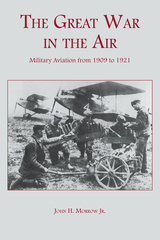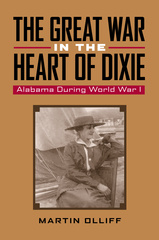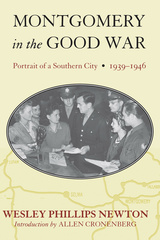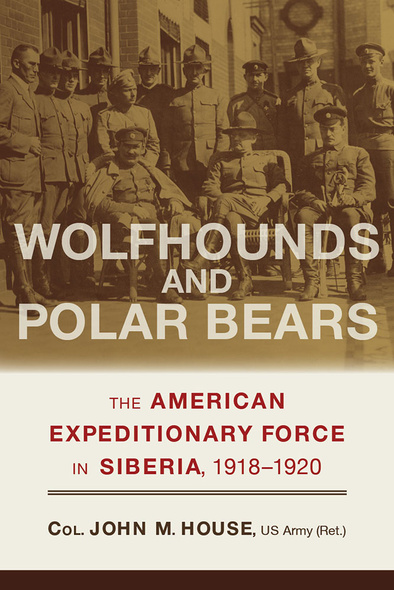
264 pages, 6 x 9
18 B&W figures - 9 maps - 10 tables
Paperback
Release Date:14 May 2019
ISBN:9780817359492
Wolfhounds and Polar Bears
The American Expeditionary Force in Siberia, 1918–1920
University of Alabama Press
Details the military aspects of the American Expeditionary Force's (AEF) deployment to Siberia following World War I to protect the Trans-Siberian Railroad
In the final months of World War I, President Woodrow Wilson and many US allies decided to intervene in Siberia in order to protect Allied wartime and business interests, among them the Trans-Siberian Railroad, from the turmoil surrounding the Russian Revolution. American troops would remain until April 1920 with some of our allies keeping troops in Siberia even longer.
Few American citizens have any idea that the United States ever deployed soldiers to Siberia and that those soldiers eventually played a role in the Russian revolution while protecting the Trans-Siberian Railroad. Wolfhounds and Polar Bears relies on the detailed reports of the American Expeditionary Force (AEF) as well as on personal stories to bring this rarely discussed expedition to life.
Initial chapters recount the period in World War I when conditions in Russia pointed to the need for intervention as well as the varied reasons for that decision. A description of the military forces and the geographic difficulties faced by those forces operating in Siberia provide the baseline necessary to understand the AEF’s actions in Siberia. A short discussion of the Russian Railway Service Corps explains their essential and sometimes overlooked role in this story, and subsequent chapters provide a description of actual operations by the AEF.
Wolfhounds and Polar Bears: The American Expeditionary Force in Siberia, 1918–1920 may well be the most detailed study of the military aspects of the American intervention in Siberia ever undertaken, offering a multitude of details not available in any other book-length history.
In the final months of World War I, President Woodrow Wilson and many US allies decided to intervene in Siberia in order to protect Allied wartime and business interests, among them the Trans-Siberian Railroad, from the turmoil surrounding the Russian Revolution. American troops would remain until April 1920 with some of our allies keeping troops in Siberia even longer.
Few American citizens have any idea that the United States ever deployed soldiers to Siberia and that those soldiers eventually played a role in the Russian revolution while protecting the Trans-Siberian Railroad. Wolfhounds and Polar Bears relies on the detailed reports of the American Expeditionary Force (AEF) as well as on personal stories to bring this rarely discussed expedition to life.
Initial chapters recount the period in World War I when conditions in Russia pointed to the need for intervention as well as the varied reasons for that decision. A description of the military forces and the geographic difficulties faced by those forces operating in Siberia provide the baseline necessary to understand the AEF’s actions in Siberia. A short discussion of the Russian Railway Service Corps explains their essential and sometimes overlooked role in this story, and subsequent chapters provide a description of actual operations by the AEF.
Wolfhounds and Polar Bears: The American Expeditionary Force in Siberia, 1918–1920 may well be the most detailed study of the military aspects of the American intervention in Siberia ever undertaken, offering a multitude of details not available in any other book-length history.
John M. House served in command and staff positions in the United States, Germany, South Korea, and Southwest Asia (Desert Shield and Desert Storm). House retired from the Army as a colonel in 2001 after twenty-six years in uniform. After retirement from the Army, he worked as a consultant and Army civilian employee and is now the president of John House, LLC. House is also a part time faculty member at Walden University, Columbus State University, and Northcentral University, and the author of Why War? Why an Army?
Acknowledgments
1. The Beginning
2. A World at War
3. The Reasons and the Decision
4. The Military Forces
5. Siberia's Challenges
6. Russian Railway Service Corps
7. American Expeditionary Force
8. Initial Operations
9. Garrison Life
10. Railway Guard and the Twenty-Seventh Infantry
11. Railway Guard and the Thirty-First Infantry
12. Riding the Rails
13. The Final Days
Conclusion
Appendix A: Aide Memoire
Appendix B: AEF Principal Officers
Appendix C: AEF Strength Figures
Notes
Bibliography
Index

